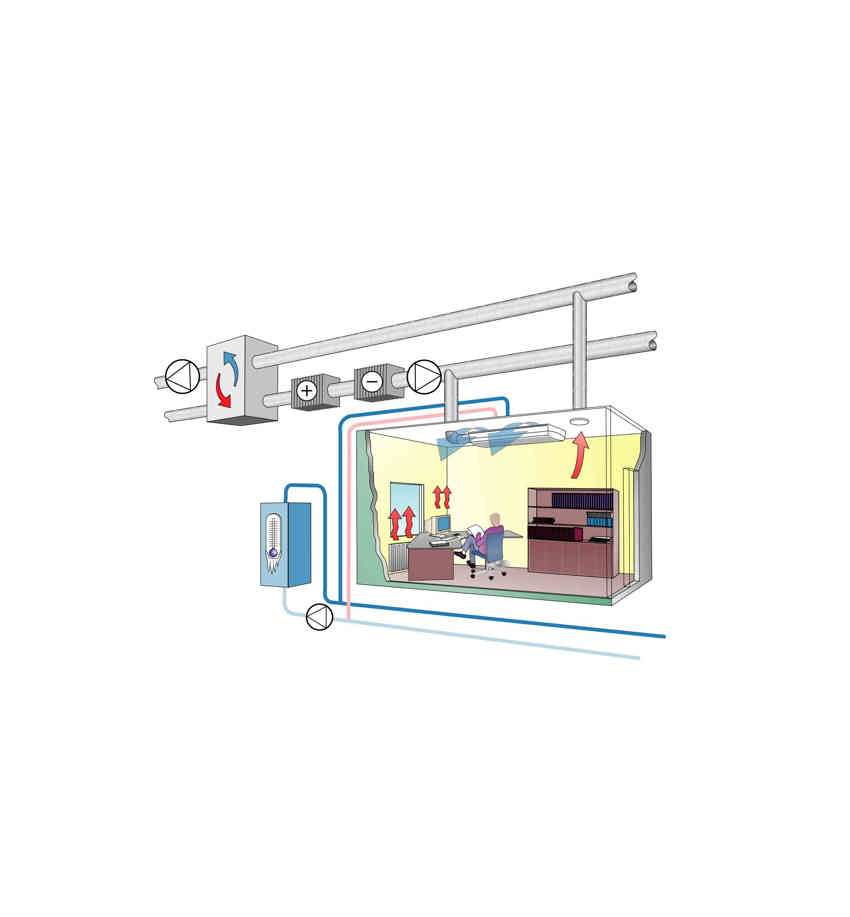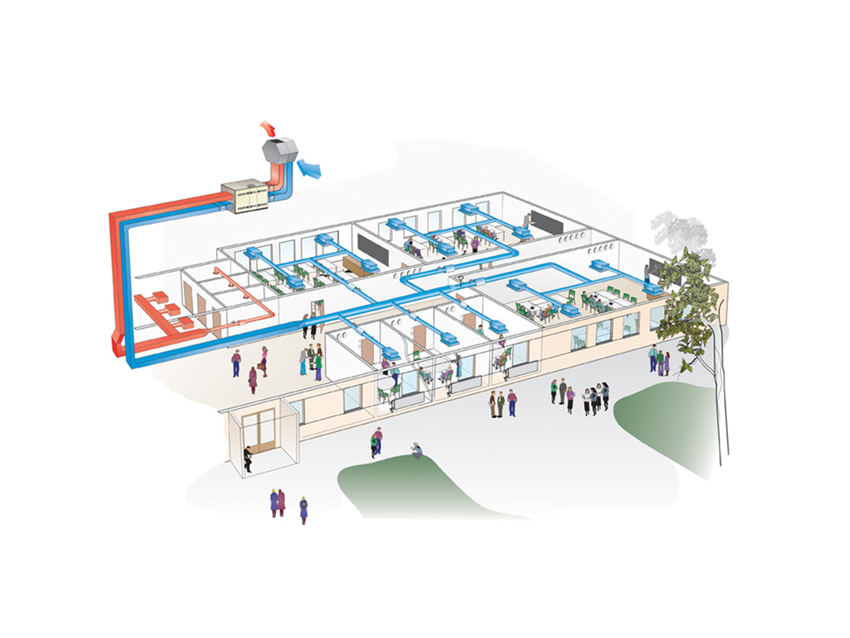Airborne or waterborne cooling?
Both air and water can be used for distributing cooling. What makes water the ideal choice for cooling is that waterborne systems take up less space, the unit itself is smaller, and water is a more effective medium for energy transport than air. Conversely, if you opt for airborne distribution, the benefit is less complex, lower-cost installation, a system that can handle larger air volumes, and the option of using free cooling.
In sum, there are consequently a number of factors determining which basic system to opt for. The cost, aesthetic and practical considerations all need to be factored in, as does the building space available.
Waterborne – spatial factors are key
With this solution, the individual rooms are cooled by a waterborne system. The existing airborne system is then used solely to meet air quality requirements. In a property conversion or refurbishment situation, a waterborne cooling system is usually preferable since it is relatively easy to accommodate the water pipes required for distribution of cold water in the building. Systems with waterborne cooling may also be preferable for new builds, since the space requirement above the ceiling is less than for airborne cooling. In some tall buildings this may even allow you to “recoup” extra floor levels.
Typical applications of waterborne cooling, where low to medium-high air flow with high cooling capacity are common, include: Conference rooms, shops, classrooms, restaurants, offices, IT rooms, hotels and banks.


Air – economy and cooling requirements decide
In airborne systems, the air flow rate is generally determined by the cooling requirement. The system has to be able to cater for variable cooling requirements 24 hours a day and year-round. Airborne cooling is available in two basic types; with constant or variable flow.
In existing buildings, it is usually both challenging and costly to alter the ducting. If cooling requirements are to be met without the capacity to transport sufficiently high air flows in the existing ducts, the solution for conversions is to then install a waterborne cooling system. Where high to medium-high air flows and variable air volumes are likely to occur, these are the typical applications for airborne cooling: Conference rooms, shops, classrooms, restaurants, light industry, cleanrooms in hospitals and specialised industry, shopping centres and sports halls.